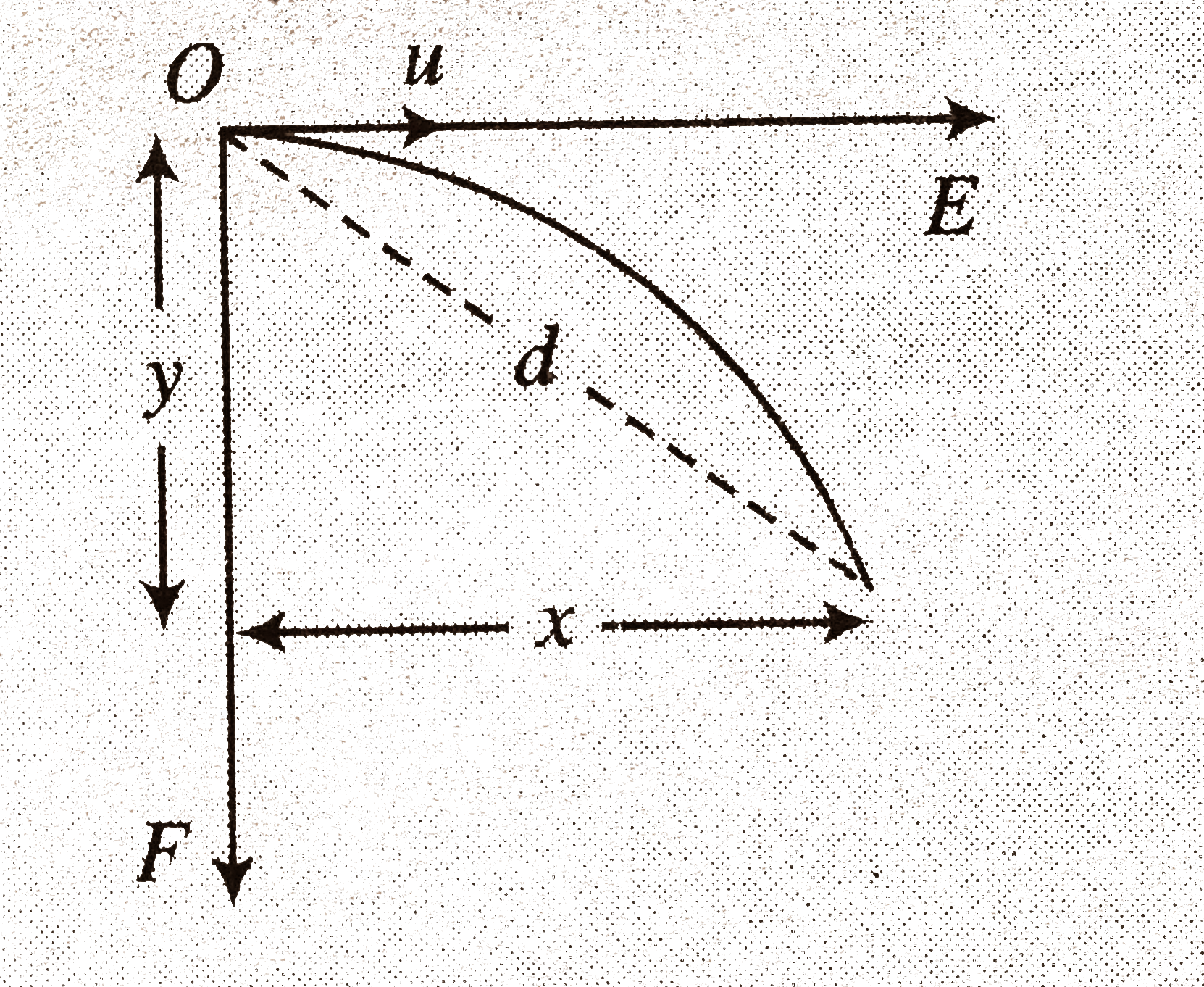A body mass 2kg has an initial velocity of 3 metre//sec along OE and it is subject to a force of 4N in a direction perpendicular to OE. The distance of body from O after 4 sec will be:

12 m
20 m
8 m
48 m
The correct Answer is:B
Step by step video, text & image solution for A body mass 2kg has an initial velocity of 3 metre//sec along OE and it is subject to a force of 4N in a direction perpendicular to OE. The distance of body from O after 4 sec will be: by Physics experts to help you in doubts & scoring excellent marks in Class 11 exams.
Updated on:21/07/2023Topper's Solved these Questions
- NEWTONS LAWS OF MOTIONBook:ERRORLESS Chapter:NEWTONS LAWS OF MOTIONExercise:Third Law of Motion
Explore 24 Videos
- NEWTONS LAWS OF MOTIONBook:ERRORLESS Chapter:NEWTONS LAWS OF MOTIONExercise:Conservation of Linear Momentum and Impulse
Explore 27 Videos
- NEWTONS LAWS OF MOTIONBook:ERRORLESS Chapter:NEWTONS LAWS OF MOTIONExercise:Self Evaluation Test
Explore 16 Videos
- MOTION IN TWO DIMENSIONBook:ERRORLESS Chapter:MOTION IN TWO DIMENSIONExercise:Exercise
Explore 319 Videos
- ROTATIONAL MOTIONBook:ERRORLESS Chapter:ROTATIONAL MOTIONExercise:Practice Problems (Problems based on motion of connected mass)
Explore 10 Videos
Similar Questions
A body of mass 2kg has an initial velocity of 3ms−1 along OE and it is subjected to a force of 4N in OF direction perpendicular to OE. Find the distance of the body from O after 4s.
 .
.
View SolutionA body of mass 5 kg initially at rest is subject to a force of 20 N. What is the kinetic energy acquired by the body at the end of 10 s ?
View Solution
Knowledge Check
Assertion : A body of mass 4 kg has an initial velocity 5ˆims−1. It is subjected to a force of 4ˆjN. The displacement of body from origin after 4 s will be 21.5m.
Reason : The equation v=u+at can be applied to obtain v if a is constant.AIf both Assertion and Reason are correct and Reason is the correct explanation of assertion.BIf both Assertion and Reason are correct but Reason in not the correct explanation of Assertion.CIf Assertion is true but Reason is false.DIf Assertion is false but Reason is true.A body is moving with a velocity 5m/s along a striaght line.A force of 10N is applied to the body perpendicular to the line of motion. If the body is of mass 2kg, then the acceleration of the body along the initial straight line of motion is :
A5m/s2B0C10m/s2Dnone of theseA body has an initial velocity of 3m/s and has an acceleration of 1m/sec2 normal to the direction of the initial velocity. Then its velocity 4 seconds after the start is
A7m/sec along the direction of initial velocityB7m/sec along the normal to the direction of initial velocityC7m/sec mid-way between the two directionsD5m/sec at an angle of tan−1(4/3) with the direction of initial velocity.
A body of mass 2 kg is moving along x-direction with a velocity of 2 m/sec. If a force of 4 N is applied on it along y-direction for 1 sec, the final velocity of particle willbe-
View SolutionA body of mass 2kg moving with a velocity of 10m/s is brought to rest in 5sec. Calculate the stopping force applied.
View SolutionA body of mass 5kg initially at rest, is subjected to a force of 40 N. Find the kinetic energy acquired by the body at the end of 5 seconds :
View SolutionA body has an initial velocity of 3ms−1 and has an acceleration of 1ms−2 normal to the direction of the initial velocity. Then its velocity 4s after the start is.
View SolutionA body of mass 2 kg moving with a velocity of 3 m/sec collides head on with a body of mass 1 kg moving in opposite direction with a velocity of 4 m/sec. After collision, two bodies stick together and move with a common velocity which in m/sec is equal to
View Solution

